
| Разделы | |||||||||||||||||||||
|---|---|---|---|---|---|---|---|---|---|---|---|---|---|---|---|---|---|---|---|---|---|
| @ Иллюстрации и Обложки | |||||||||||||||||||||
@ Книги
| |||||||||||||||||||||
| @ Планета Перн | |||||||||||||||||||||
| @ Драконы и файры | |||||||||||||||||||||
| @ Дельфины | |||||||||||||||||||||
| @ Биология | |||||||||||||||||||||
| @ Общество | |||||||||||||||||||||
| @ Родословные | |||||||||||||||||||||
| @ События | |||||||||||||||||||||
| @ Энциклопедия | |||||||||||||||||||||
| @ Улыбнитесь | |||||||||||||||||||||
| @ Гостевая книга | |||||||||||||||||||||
| last modified
23.01.2005
|
|---|
Всадники Перна. Материалы
The Dragonlovers guide to pern
IV. From Dragonets to Dragons
Untapped Potential
“If only the dragonets were larger!”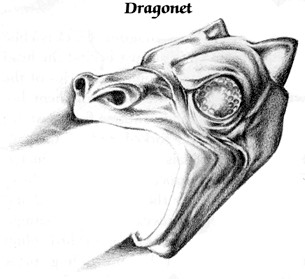
For eight years, fire-dragonets had been thought of only as pets and useful watch-animals, protecting children from snakes and the chicken runs from wherries.
Perceptive eyes saw that the intelligent mustering of the dragonets during the first Threadfalls was a potential answer to protecting the settlements from danger. Adding heroism to the personality traits already ascribed to the little creatures, the colonists cheered the returning warriors, most of whom stank of sulfurous fumes.
The regurgitated mass of sand that the dragonets brought up after flaming the Threads suggested that their second stomachs had evolved for the purpose of containing and mixing phosphine-bearing rock with internal acids to produce flame. The rock itself was easily obtainable on the surface of volcanic terrain, and a dragonet's back teeth were certainly strong enough to masticate it.
Dragonets resemble the dragons of Terran mythology. They have four limbs and two wings and, with a little advance preparation, are capable of breathing fire. Dragonets' wings are translucent membranes stretched out over the dragon's version of arm, hand, and finger bones, like those of a bat. The membrane looks fragile, but it is fairly durable. Considering the size of the sails, the wing is remarkably light. The boron crystalline structure is lighter than a similar carbon-based wing. Around the bones and where it attaches to the muscles, the membrane is thicker.
The rear limbs have three real toes, not claws, on the feet. The front limbs are equipped with pincers, a single toe that folds back against two which are rigid claws, used for hunting in the water. This caused the marine biologists to ascribe a plankton eater as the dragonets' ancestor.
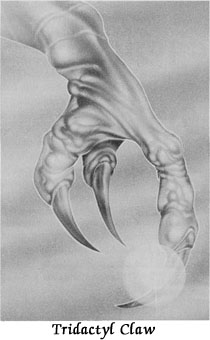
On the back of a dragonet's neck is a line of ridges leading from just behind the head knobs down to the shoulder muscles of the wings. The ridges are not prominent between the wings and continue from just behind them to the forked end of the tail. Hidden in the fork is the creature's sphincter. The genitalia are concealed behind pouchlike flaps of skin under the junction of tail and body, and are only revealed during mating.
The multifaceted eyes in the little blunt faces are protected by protruding brow ridges and triple sets of eyelids. A dragonet's
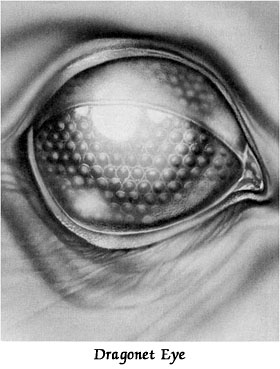
Dragonets are warm-blooded, with an internal body temperature of 35 degrees Celsius. Their dark green ichor is based on copper, a characteristic they share with tunnel snakes and wherries. The skeletal system is based on light, flexible plates rather than more easily breakable bones. Their lung capacity, contained within a ribcage composed of a single piece, is surprisingly large. With dorsally placed lung sacs fully inflated, a dragonet's chest will swell to double its normal size. Between impressively sharp, tough teeth lies a forked tongue.
Unlike the tunnel snakes, which vary from smooth hide to scales, dragonets
have a uniformly soft, hairless skin. Their hides are glossy but not metallic.
Dragon skins vary in color, based on the amounts of nickel, cobalt, and iron in
their makeup. The golds range from pale yellow to dark, antique gold. Bronzes
all have a golden-green sheen, but occasionally a few can be found that are
nearly as dark as a brown. The shimmering hides of the blues and greens show
nearly the whole spectrum of those shades, while browns go from tan through to
chocolate. A sick or ill-cared-for dragonet will have a dull skin. Healthy,
happy ones have silky, resilient hides.
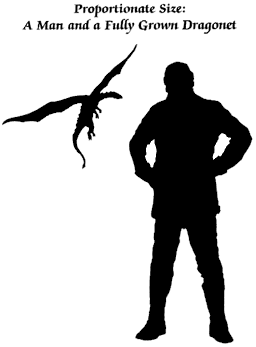
During an attempt to X-ray the first dragonet Impressed by a human, the colony's scientists learned another characteristic of these most graceful of Pernese natives: they could teleport. The distressed dragonet escaped from the examination room by disappearing, only to reappear in the antechamber on the other side of a closed door, where his mistress awaited him.
Dragonets are also capable of limited telepathy. No other suggestion explained to the first colonists how the little creatures always missed colliding in midair, or how they coordinated their silent attacks against wherries or herpetoids, or how they always knew where they were.
Any sunlit place or burrow above the high tide mark is suitable for a dragonet female to lay her eggs. Tunnel snakes get more of a green's eggs than a gold's, because the golden queens are much more protective, vigilant, and intelligent. Golds will also muster the other colors to help them protect their eggs. Bronzes, the next largest, who generally mate with the golden queen, lead the blues and browns in defense of the nest. In the wild, there are few green dragonets in the fair of a gold. The greens have their own nests elsewhere.
Curiously, once a dragonet has lived through its first moments, centuries might pass before it dies. Dragonets were not designed for “planned obsolescence," as humans were. A dragonet fifty years old looks the same as one just into maturity. Perhaps with Threadfall and other natural hazards, the dragonets' longevity became necessary to keep the race from becoming extinct. Over time, one fertile female could repopulate the planet. Unless trauma occurred, it would live on and on.
A newly hatched dragonet is only a few inches long. When one reaches full growth, it is the length of a woman's arm from nose tip to tail tip.

MENTASYNTH
The first alterations to the dragonets, accomplished in the early colony years, involved treating a clutch of eggs with mentasynth, the Eridani compound designed to enhance fetuses' empathy. Their pincer claws were also genetically altered to a pentadactyl arrangement. When the eggs hatched in an environment that closely duplicated a nest in the wild, the new dragonets were capable of more direct communication and empathy with the humans who Impressed them.
Over the next several dragonet generations, the improved dragonets grew to be larger adults than their wild counterparts did, probably a result of superior food and care. They also developed more pronounced head knobs.
FIVE TOES FROM THREE
The original dragonets had a single pincer that closed on a two-fixed-claw “hand.” Examination showed that the forearm had two arm bones that rotated to produce the ambi-dactyl movement, which gave the biologists the potential to change the claw configuration for the better. The original dragonets' front feet were adequate for catching fish, which was their principal dietary staple, but not as efficient as a pentadactyl hand for catching land-bound creatures.
The genes were altered to produce four “fingers” and a “thumb.” The bioengineered dragonets bred true; as they became more and more prevalent, people began to call them “fire-dragonets,” and finally “fire lizards.” These new fire lizards were also leaner than the old dragonets and had flatter noses.
By the time Thread fell, nearly everyone who was capable of Impressing had one or more fire-dragonets of the newly enhanced or the old, natural configurations.
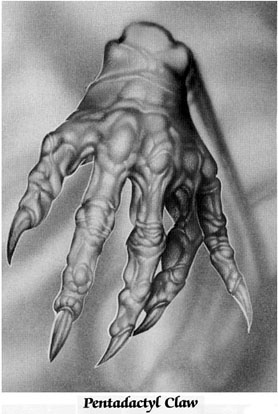
DRAGONS
Kitti Ping, the colony's chief geneticist, was a tiny, frail woman, already over a hundred years old at the time of Landing. Her skill at manipulating the Eridani techniques of genetic engineering was impressive, almost legendary throughout the FSP. After several attempts to alter the dragonets, she produced a batch of dragon embryos, which she was satisfied would do what the colony needed them to do. Shortly thereafter, she died at the age of 110, without having seen the results of her work. Her assistants and her granddaughter were left to follow her program as it progressed.
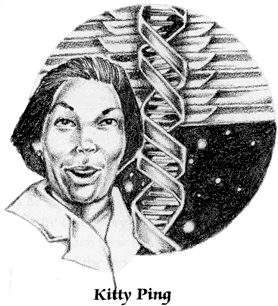
Using the original success as a stepping-stone, Kitti Ping had given the experimental eggs the gene equation for five-digit claws. Her program also called for forelegs shortened to more modified “arms,” and a stronger endoskeleton, so the dragon would be comfortable upright. The back legs would be massive with muscle, relying on the natural ball-and-socket joints to keep the knees from dislocating on takeoff and landing. She made no changes in the basic wing design.
The dragons would need a certain amount of boron to remain healthy, just as humans needed calcium for their skeletal systems. Fortunately, an earlier program of Kitti's allowed for this need: She had introduced into the colonists' carbon-based animals the ability to metabolize trace elements of boron—which they ingested as part of their diet on Pern—into muscle tissue, rather than excreting it. Thus the dragons would be able to fill their boron requirement from a diet of animal meat.

Kiti also used mentasynth to enhance the already strong empathy that the dragonets exhibited. her tinkering did not interfere with the natural tendencies of the species. The new dragons would be able to teleport from place to place almost instantaneously, just as the dragonets did. They would Impress easily as permanent companions to creatures other than their own species, and would now grow large enough to carry a human being and protect human habitations from Thread.
THE FIRST HATCHING
When the time came from the Hatching of the meter-long eggs, hot sands took the place of beach nest, and humans proffered food and feeling of love and welcome to the hatchings, in place of the dragons' biological family. It look a day and a half for the eighteen successful eggs to Hatch and Impress on their young human companions.

The first group of the bioengineered eggs yielded two gold dragon queen, three bronze dragons, and three browns. The second group yielded three gold queens. The third group brought five golds, one bronze, and one brown into the world. The fourth group, engineered after Kitti Ping's death, Hatched four golds, three bronzes, and two brown.
The greatest wonder of the first Hatching was the discovery that, at the
moment of Impression, each new dragon-mate was suddenly aware of the dragon's
mental touch an voice as it named itself to him or her. The dragons proved to
have distinct personalities of their own, which appeared to be perfectly
compatible with those of their Impressed humans.
The original dragons were ten to twelve feet long and about sixteen to eighteen hands high at the shoulder. Every successive generation great larger than the one before, at first dramatically, then tapering off to small growth spurts. The gradual increase in size reached its culmination twenty-five centuries later Turns before the Ninth Pass, with Ramoth, who, at forty-five meters, was the largest dragon ever shelled.
The dragons had the ability to fly as soon as their wings dried, but as they did not have to hunt for their food of flee from predators, flight was not an immediate necessity. The veterinarians and biologists were reluctant to allow the new dragons to fly until they were fully mature, for fear of straining their wing muscles. The fire-dragons hunted fish an meat for the growing hatchings and the human found it was a full-time job to bathe, oil, and feel their charges.

Once the dragons were permitted to fly, the rids discovered that straps were needed for a secure seat on the neck ridges. It was possible during leisurely flight to remain on the back of one of these small dragons using only the knees for pressure, as on a horse, but it would take more than that to keep a rider from falling off when a dragon changed direction in pursuit of a clump of Thread. In order to allow his rider to mount, a dragon would crouch down and put out a forearm for use as a step-up. As the dragons got bigger, it became necessary to wait to mount until the fighting straps, which could double as handholds, were in place.
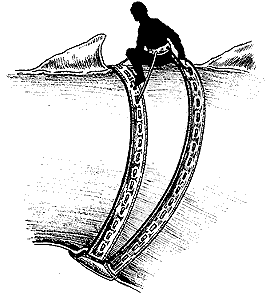
The wings of the fully evolved dragon are each approximately three-fourths the length of the entire dragon, who will run from twenty-five to forty meters long. The tip-to-tip wingspan, including the breadth of the shoulders, is therefore one and two-thirds the length of a dragon.
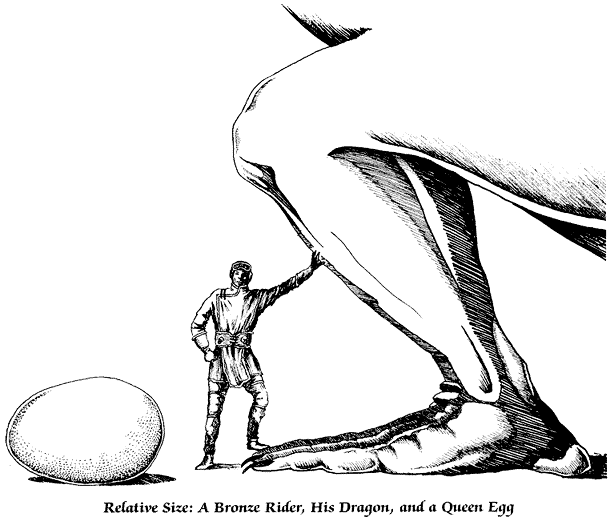
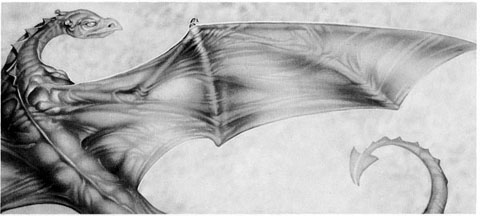
What is usually thought of as a “dragon-length” as a measure of distance is equal to the average length of the most common dragons, the greens, who number the same as all the blues, browns, and bronzes put together. Modern green dragons grow to between twenty to twenty-five meters in length. Blues are the next largest at twenty-five to thirty, browns range from thirty to thirty-five meters, bronzes from thirty-five to thirty-eight and golds from thirty-eight to forty-two as a rule, though Ramoth was closer to forty-five meters long (or about the size of a jet plane).
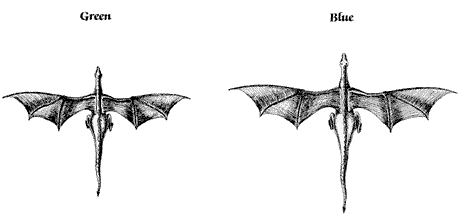
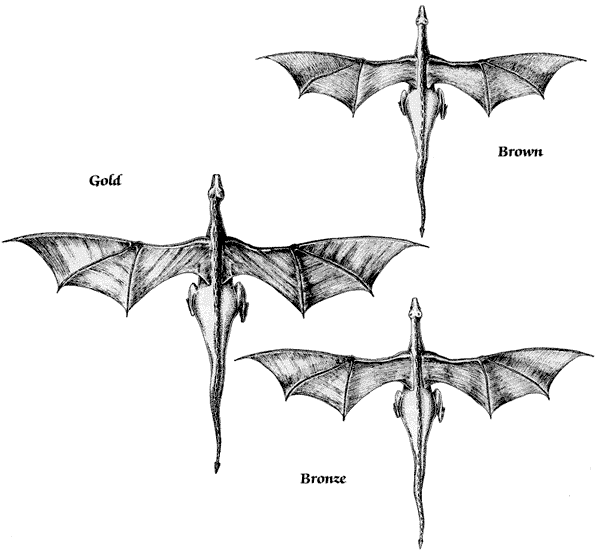
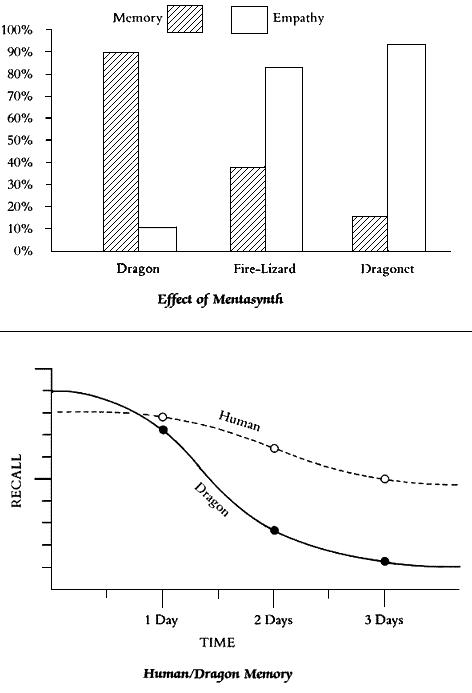
Dragons' noses are more pointed than those of fire-dragonets, and their head knobs are fully developed. Their manual dexterity is increased, as is their intelligence, but their memories are reduced to short-term retention, as Kitti Ping made use of that portion of the brain for a superior telepathic link with humans. Their human mates constantly need to remind them of important facts with repetition and reassurance.
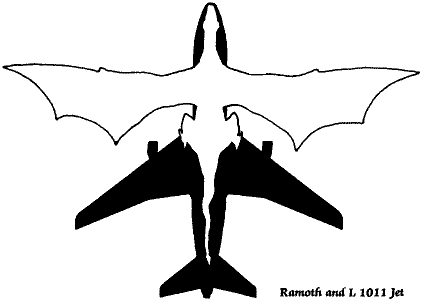
The first dragons were too small to fly an entire Threadfall, but they were far more effective aerial protection than the slower, less agile airborne sleds. With their mounts' natural ability to avoid collision, the riders soon learned the patterns for fighting that the sled pilots used. As their numbers and their experience increased, the small dragons fought longer and over more locations. Many were lost between or to injuries. Indeed, the initial “Flight” riders were not far ahead of the Weyrlings they trained to follow them. It took the entire Pass of fifty years for Fort Hold to reach full strength in number of fighting dragons.
THE FIRST WEYRS
In the face of the colony's first experience with Thread, Landing became crowded with stakeholders who had fled from their ravaged settlements back to their deserted temporary dwellings. There was little room for the dra-gonfolk to live with their beasts, and they were already being set apart from their unimpressed neighbors, some of whom saw dragons only as a means of removing strong backs from the work force.
The dragonriders and their families moved into the Catherine Caves around the edge of the plateau. The dragons were perfectly comfortable living underground, and the humans were pleased to have roomy quarters that were secure from Thread.
BETWEEN
Between is a non space, a postulatum. Between is the journey from one place to another without crossing the space in between. A dragon can move through time and space at will, depending on what he perceives as his riders stated destination. Every rider is trained to be careful when he wishes to cross time zones. If he was in Fort in the morning and wished to go to Benden at the same time of day, he would actually be going back in time three hours because of the day's progression.
Going between times takes longer than going between places. If the dragon cannot find the time or place his rider has pictured, they will not come out of between. That was why it was so dangerous for Lessa of Benden to jump between four hundred Turns at the beginning of the Ninth Pass using only the Ruatha tapestry as a guideline. She intuited its significance as an actual record, but she could have misjudged its accuracy and lost herself and Pern's only remaining queen dragon in the cold void.
MATING
From the outset, dragon queens were encouraged to mate with as many of the males, both brown and bronze, as possible, to take maximum advantage of the available gene pool. Brown-gold matings produce few bronzes and no queens, but the resultant hatchlings are healthy. Each queen rises to mate two or three times a year, and produces clutches of ten to sixteen eggs at a time.
Except in certain mating situations, dragons are never aggressive with one another. When they are ready to rise, the queens become primitive, gorging on kills. The males turn competitive, their only goal to outmaneuver each other in mating flight to get to the queen. (Illustrated on page 41).

Dragons have no territorial imperatives. Their riders make sure they lack for nothing, not love, nor food, nor shelter; and since dragons have no long-term memory, they quickly forget the unpleasant realities of Thread. Their mild personalities act as calming influences on their riders.
Because of the incredible emotional and physical effects dragons mating have on the humans bonded to them, the riders discourage outside involvement with anyone who is likely to be jealous. The resultant discord of such a situation interferes with the mental health of the riders and, through them, their dragons, It is loyalty to the whole of Pern, rather than to a single man or woman, that is encouraged.
WATCH-WHERS
In an effort to produce more dragons after her grandmother's death, Wind Blossom Ping also attempted to use the Eridani equations on dragonet genetic material. However, she did not have the same grasp of genetics as Kitti Ping, and the results of her tinkering were not totally successful.
What hatched from the eggs she engineered looked like ugly, malformed dragons, and were dubbed “whers.” Their wings were stumpy pinions that looked functional but were not. They were smooth-skinned and colored like dragons, but that was almost the only point of resemblance.

When full-grown, whers weighed between six and eight hundred pounds, about the size of a small, low-slung horse. Their feet were arranged with two claws, and a single pad supported the body weight; in spite of such bad design, they could move with surprising speed.
Whers were Impressable, and they adored their human mates with the same devotion and empathy as dragons did. They were also very territorial and, if not properly introduced, would kill anyone they believed was invading their home. As a result of Wind Blossom's attempt to smooth out the natural faceting of the eyes, their eyes had malformed lenses with countless little facets that aimed light directly back into the fovea like a magnifying glass. Whers were photophobic and had poor focal length, but they were effective guardians at night, able to see even in total darkness. Their senses of smell and hearing were as keen as their night vision. They were not as intelligent as dragons, but they could serve a purpose. And they bred true.
Whers are solitary and antisocial. If a female hatches eggs away from a human habitation, the young return to the wild. They avoid encounters during the day, but they will kill if disturbed at night. Only a few eggs of each laying mature to hatch.
Ruth
The white dragon Ruth is a throwback to the original dragons in size and proportion. As he is only twenty feet long, his rider, Jaxom, must take the same precautions not to overload or overfly him.
Ruth would be considered genetically flawed by those living during the Ninth Pass. Most similarly stunted eggs simply fail to Hatch, and most of them show no signs of life at all. The Tradition has always been that if an egg does not Hatch by itself, it is not helped. But Jaxom did interfere, and Ruth not only lived and prospered, but changed the outlook and history of Pern.
| I think the nearest thing to being a dragonrider is a racehorse jockey. — Interview with Anne McCaffrey, Dragonhold, Ireland, 1987. |
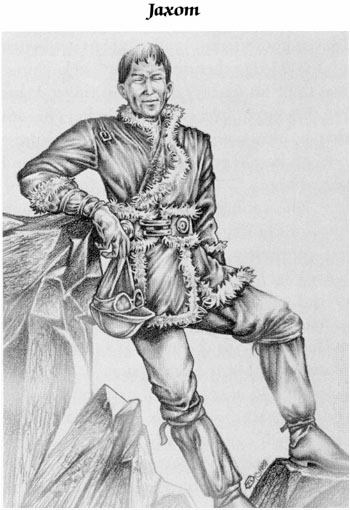
The Dragonriders of Pern ® is a registered trademark.